Iceland is often called the land of fire and ice. Emerging over the last few years as a popular travel destination, it is easy to see why so many people have listed this incredible country on their bucket lists. The landscape is wild and harsh, with powerful active volcanoes, tectonic plates pulling the country apart, and glacial lagoons filled with floating icebergs. It is however also incredibly beautiful, with little oasis’ breaking through volcanic rock fields, cascading waterfalls and traditional architecture.
Iceland is a land steeped in sagas, legend and folklore, and is not without its fair share of mystery. Here are 20 historic, natural and famous landmarks in Iceland for an amazing edge-of-the-world experience. There’s no best time to visit Iceland and the scenery is incredible all year round. If you can’t make to Iceland soon, get a taste of the landscape and landmarks by watching some of these Nordic Noir shows on Netflix.
Contents
20 Incredible Iceland Landmarks
Famous Landmarks in Iceland
1- Solfarid
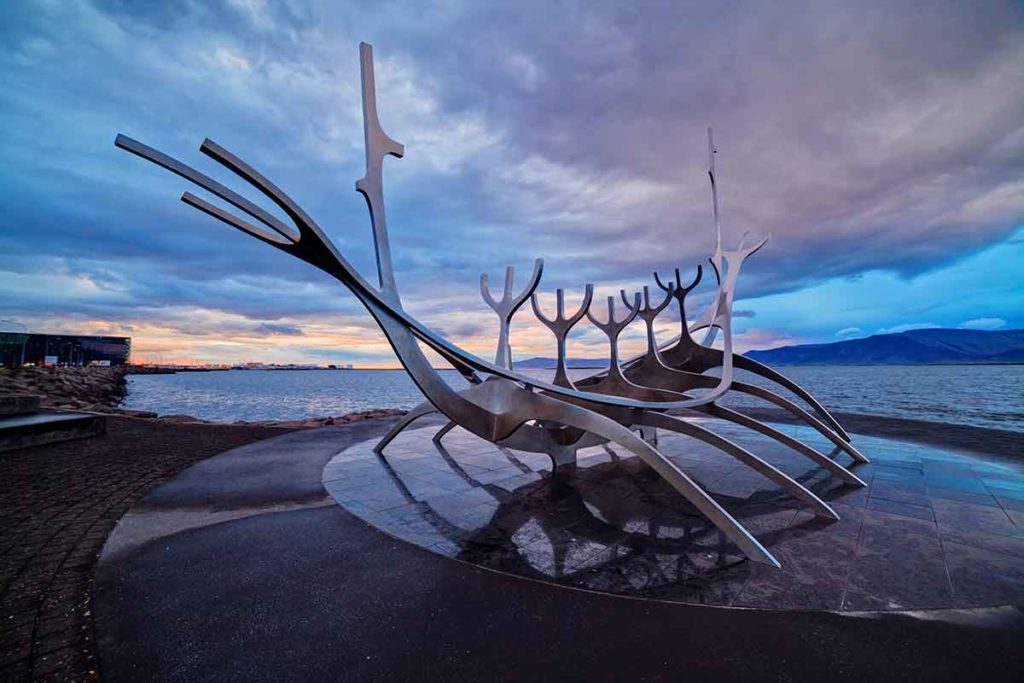
Although Solfarid, or ‘Sun Voyager’ is a must-visit landmark in Reykjavik designed to resemble a Viking ship, it doesn’t have any links to sagas.
The sculpture instead was designed to reflect a boat from a dream, and an ode to the sun. Arnason wanted the boat to project themes of hope and progress and exploration.
Solfarid was erected in 1989 following a competition to design a sculpture for Reykjavik’s 200 year anniversary.
The sculpture sits on the waterfront with Mount Esja in the background. Visit at sunrise or sunset for spectacular views.
2- The Blue Lagoon
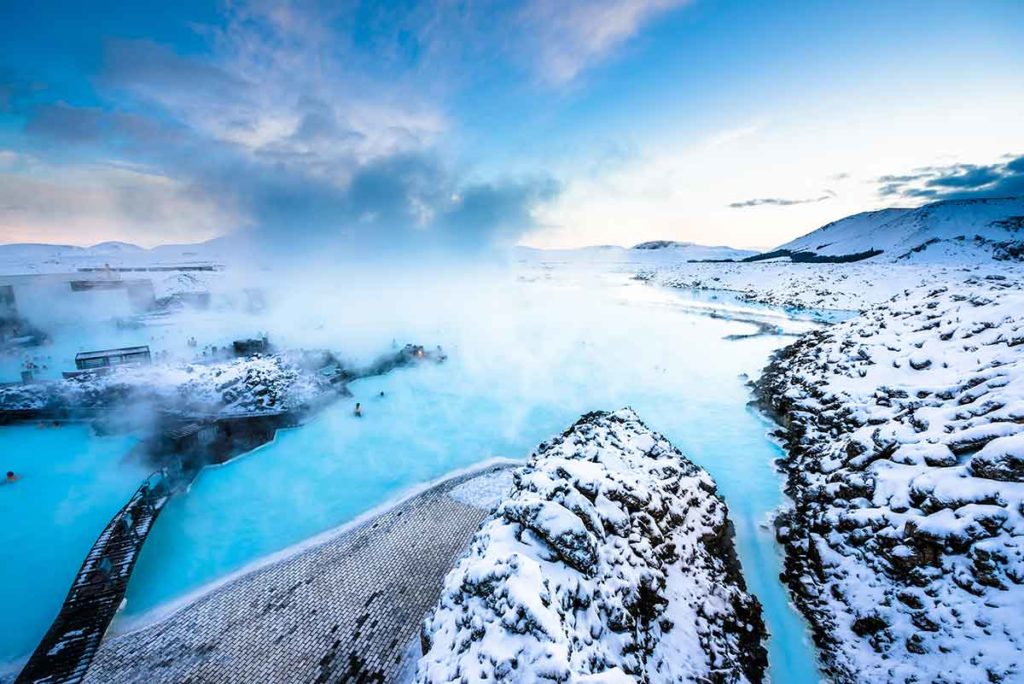
A mixture of 70% ocean water and 30% freshwater, the Blue Lagoon opened its doors as a geothermal spa in 1999.
The spa relies on geothermal springs, which were discovered to have health benefits in the 1980s. The spa’s water is formed 2000 meters below the earth’s surface.
As the two types of water mix at searing temperatures, minerals from the rocks enrich the waters.
One key mineral in the waters is silica, which has nourishing and healing abilities and gives the water its iconic colour.
3- Hallgrímskirkja
One of the most visited landmarks in Iceland, Hallgrímskirkja is a church and sanctuary in Reykjavik.
The cathedral is modern in its design and features a stepped concrete facade designed to reflect the Icelandic landscape surrounding it.
Hallgrímskirkja’s interior is elaborately decorated; from its Icelandic basalt and crystal baptismal font to the stained glass panels designed by Leifur Breiðfjörð.
The cathedral is named after Hallgrímur Pétursson, who wrote the Hymns of Passion.
This is reflected in many of the cathedral’s decorative elements, including much of the stained glass.
4- The Perlan Observatory
Another famous landmark in Iceland is the Perlan observatory, which showcases the ‘wonders of Iceland’, and offers visitors a chance to immerse themselves in science and nature.
Designed by Icelandic architect Ingimundur Sveinsson, the Perlan is itself an iconic building simply for its appearance and not a typical observatory.
The entire building is a glass dome sitting atop six large hot-water tanks filled with geothermal water, allowing it to remain warm in winter. T
he warm water is replaced by cooler waters in summer.
Located on top of Öskjuhlíð Hill, the views of the night sky from inside the observatory are vying for attention from the spectacular views over Reykjavik from the summit.
5- Northern Lights
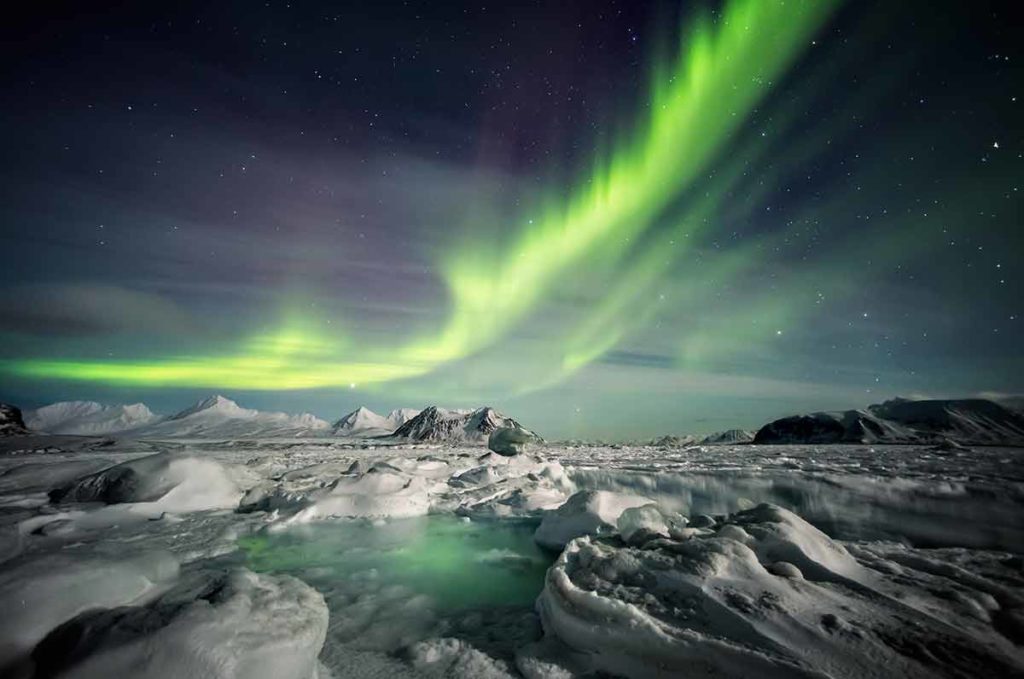
A must-see natural phenomenon and landmark when in Iceland is the Northern Lights or Aurora Borealis.
The Northern Lights are a naturally occurring phenomenon and as such, sightings are not always guaranteed.
Should you be lucky enough to catch a glimpse of this spectacular sight, the Icelandic wilderness is the perfect landmark spot.
The name Aurora Borealis comes from Aurora, the Roman goddess of the Dawn, and Boreas, the Greek term for the north wind.
The best time to see the Northern Lights is between late August and mid-April when the skies are at their darkest.
For more amazing European Landmarks, read:
- 30 Spain Landmarks
- 20 Switzerland Landmarks
- 22 Germany Landmarks
- 35 London Landmarks
- 30 France Landmarks
- 20 Italy Landmarks
- 20 Greece Landmarks
- 20 Russia Landmarks
- 20 Scotland Landmarks
- 20 Ireland Landmarks
- 21 Wales Landmarks
- 20 Turkey Landmarks
- 20 England Landmarks
- 20 Hungary Landmarks
- 21 Romania Landmarks
- 20 Ukraine Landmarks
- 20 Athens Landmarks
- 20 Rome Landmarks
- 20 England Landmarks
- 20 Portugal Landmarks
- 20 Poland Landmarks
- 20 Iceland Landmarks
- 20 Bulgaria Landmarks
- 21 Croatia Landmarks
- 20 Bulgaria Landmarks
- 20 Austria Landmarks
- 21 Finland Landmarks
- 20 Sweden Landmarks
- 20 Denmark Landmarks
- 20 Belgium Landmarks
- 20 Netherlands Landmarks
- 20 Barcelona Landmarks
- 21 Czech Republic Landmarks
- 20 Landmarks in Paris
- 20 Landmarks in Liverpool
- 10 Istanbul Landmarks
6- Svartifoss
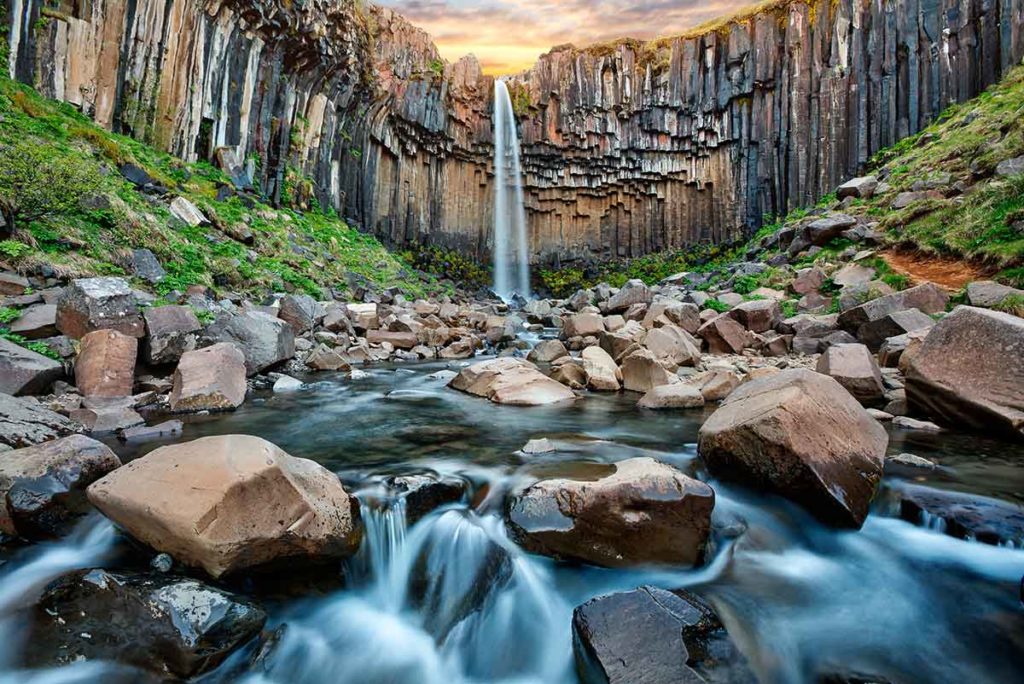
Iceland is filled with many spectacular natural landmarks, but none more so than Svartifoss waterfall.
Located in Skaftafell, this unique waterfall appears out of nowhere in the lush green Icelandic landscape.
The Skaftafell oasis is surrounded by harsh volcanic landscapes.
Svartifoss waterfall flows into a basalt columnar gorge.
The waterfall is 20 m tall and is only reachable following a 1.5-kilometre hike.
Visitors can often walk right up to the falls to immerse themselves in its majesty and power, however, for safety reasons it is sometimes roped off.
7- Thingvellir
One of the most frequented landmarks in Iceland, Thingvellir National Park is a spectacular landscape to visit.
The biggest draw to the park is not its beauty, diverse landscape or significance in Iceland’s history.
It is its geological significance that attracts so many.
A valley in Thingvellir represents a rarely seen geographical phenomenon.
It is the location where the Eurasian and American tectonic plates once met, and are now slowly drifting apart.
The park sits atop the Mid-Atlantic Ridge, and as a result, has caused Iceland to see increased levels of seismic and volcanic activity.
Dive through Silfra, the rift between the tectonic plates, for a truly unique experience.
Natural Landmarks
8- Lake Myvatn
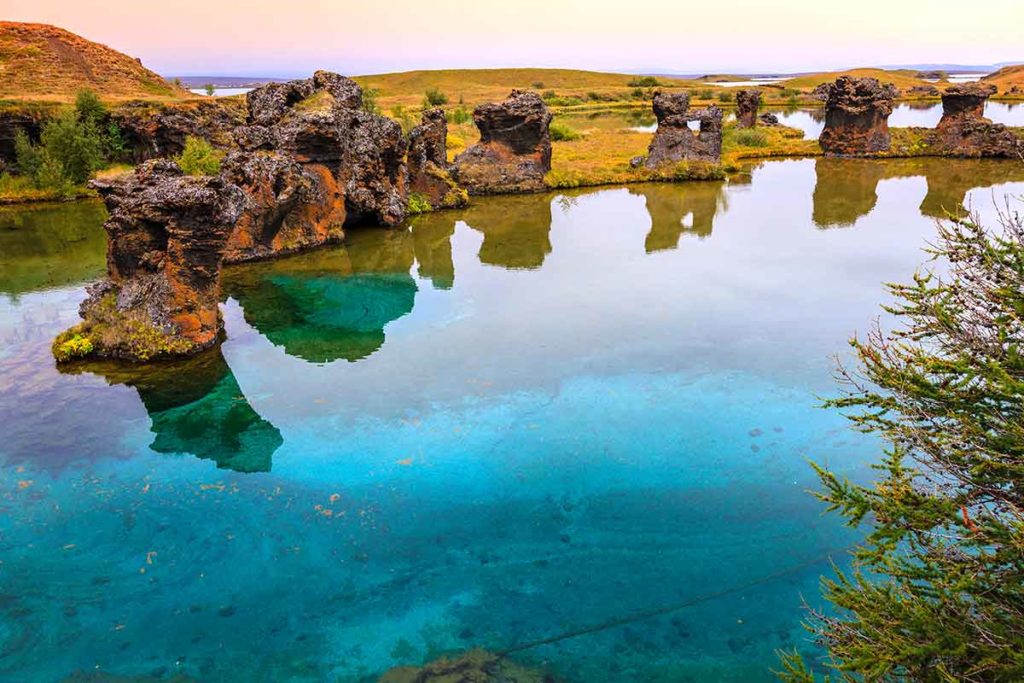
The fourth-largest body of water in Iceland is Lake Myvatn which covers a 36.5-kilometre area.
The lake forms part of the Diamond Circle of Iceland, which is a popular tourist route across the country.
Lake Myvatn is the remnants of volcanic eruptions combined with geothermal activity.
The lake has only existed for the last 10,000 years and was formed following a large eruption that blocked a river with its lava.
The landscape immediately surrounding the lake is filled with glacial pools, gorges, waterfalls and incredible scenery.
9- Hvítserkur
Sometimes called the Troll, Hvítserkur is a 15m high basalt rock stack surrounded by the waters of Húnaflói Bay.
A popular resting spot for local birds, the rock gives the appearance that it is continually moving and changing.
The rock got its nickname, Troll, from local Icelandic folklore where a troll from the peninsular hated church bells and wanted to remove them from a nearby convent as they are said to be afraid of Christianity.
As he set about his quest across the bay, filled with hatred he failed to notice the rising sun and was cast into stone.
Whether you believe the legend or not, Hvítserkur is a spectacular natural Iceland landmark to visit, particularly just as the sun rises.
10- Jokulsarlon Glacier Lagoon
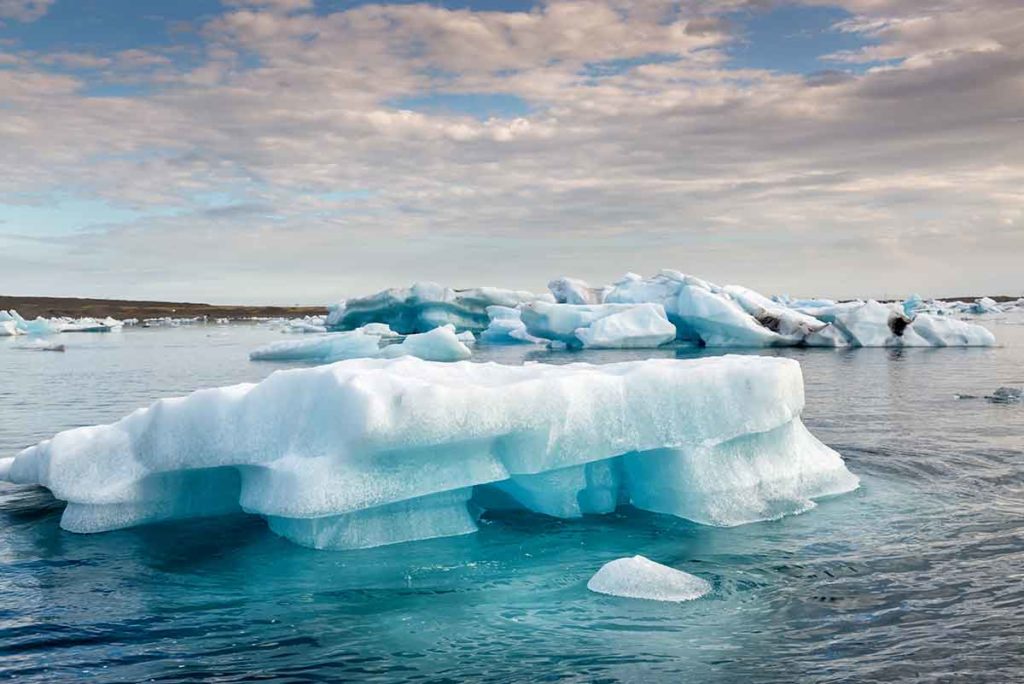
Said to be one of the greatest natural wonders in Iceland, Jokulsarlon Glacier Lagoon only recently came into existence.
Caused by climate change, the lagoon started forming in 1934 and regularly sees new ice enter its waters from the Breiðamerkurjökull glacier.
The tumbling ice creates icebergs that float in the water as they gradually melt into their surroundings.
Some of the icebergs floating on the lagoon are made from ice that is over 1000 years old.
The lagoon is 250 meters at its deepest point, making it the deepest lake in Iceland.
11- Skaftafell Ice Cave
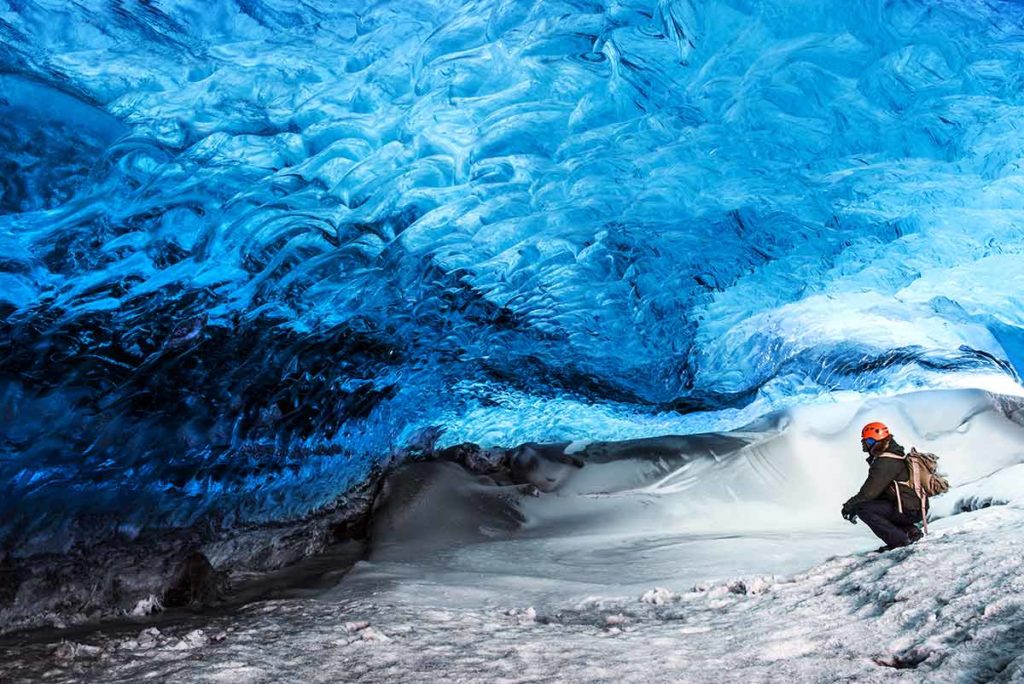
Only accessible in winter, the Skaftafell Ice Cave is a breathtaking natural landmark in Iceland.
The ice cave is located in Vatnajokull National Park and is inside a glacier.
During the winter months, the meltwater below the glacier freezes, creating ice tunnels that reflect brilliant blues and greens from the water.
Entry to the ice caves is strictly done as part of a guided tour, as the caves are part of a glacier and safety gear must be worn.
Tours often include hikes in the national park to reach the glacier, which in itself is a sight to behold.
12- Grímsvötn
The ice-covered volcano Grímsvötn, most famous for its 2011 eruption which sent a 20-kilometre ash cloud across Europe, is a spectacular if a little volatile natural landmark of Iceland.
The volcano is active, and scientists predict that another volcanic eruption could occur soon.
The volcano is unusual in its location, as it is nestled almost completely beneath a thick crust of ice, with only its crater visible.
The crater, a caldera, is filled with a subglacial lake of meltwater, and as the volcano heats up underground fresh ice is continually added to the contents of the lake.
Grímsvötn has erupted 65 times in the last 800 years, making it Iceland’s most frequently erupting volcano.
13- Askja Caldera
In the central highlands of North Iceland lies Askja Caldera, a 50-kilometre square caldera formed during an eruption in the last ice age.
The caldera is in the Dyngufjöll mountains which were also formed during this time.
Askja Caldera forms part of the Víti volcano, Iceland’s most famous volcano whose name aptly translates to ‘Hell’.
The waters are a cloudy pastel blue, often with a layer of mist sitting on its surface.
The water is often at 30°C making it a popular location for wild swimming, however research into the waters temperature and surrounding conditions are strongly recommended first.
14- Gljufrafass
Iceland is filled with spectacular waterfalls, but none more than Gljufrafass.
Almost hidden from sight as it cascades through a slot in the mountain, Gljufrafass translates to ‘the falls from the canyon’ or ‘canyon dweller’ due to its almost hidden location.
The waterfall is one of Iceland’s smallest, however, due to its size, it is possible to stand beneath the falls to feel the spray and mist on your skin.
The falls are accessible by foot, and walking through a small pool and the canyon will take you to its base.
More Landmarks in Asia:
Historic Landmarks
15- Lögberg
An important part of Iceland’s history is Lögberg, the Law Rock in Thingvellir National Park.
During the Icelandic Commonwealth period of 930 to 1262, a speaker who would read aloud the laws of the commonwealth at Lögberg.
Lögberg was a location where anyone from the community could step forward and settle a disagreement, share news or discuss important matters.
Lögberg was immortalised through many Icelandic sagas, including when Iceland adopted Christianity.
In 1262, as Icelanders formed an allegiance with the Norwegian king, the use of Lögberg as a location to speak and settle legal actions fell out of practice, and as such its location has long been a subject of debate amongst historians and archeologists.
16- Oddi
Oddi is a historic church site, farm and vicarage in Rangárvellir.
According to historians, a church has stood on the site of Oddi since Iceland adopted the Christian faith, with the current building being built from timber in 1924.
Within this tiny church, which can seat approximately 100 people, are many treasures from the churches history.
Included in this collection is a silver chalice dating back to 1300, and an altarpiece from 1895 carved by a local carpenter.
The church was designed by Guðjón Samúelsson and is famed for its white exterior and red roof.
17- Höfði House
Built in 1909, Höfði House is a famous historical landmark in Reykjavik.
The house was built for the French consul, and in later years was the home of Einar Benediktsson, a poet.
Following its years as a home and consul, Höfði House became a location for formal events and official business.
Famously, in 1986 a summit between Ronald Reagan and Michael Gorbachev took place within the house as it represented a neutral location between America and Russia.
Höfði House is located by the water, with views stretching across its surface to Mount Esja.
18- Þjóðveldisbærinn Stöng
Þjóðveldisbærinn Stöng is a reconstructed Viking village dating from the 1970s.
The village was built to allow people to see what life would have been like for Icelanders during the Viking period.
The main house is built from timber with a roof covered in grass and plants, allowing it to become almost invisible in the surrounding landscape.
Behind, a tiered waterfall can be seen.
The village was designed to replicate a Viking village buried in ash during a volcanic eruption in the early1100s.
This village is currently being excavated and is open to visitors.
19- Víðimýrarkirkja Church
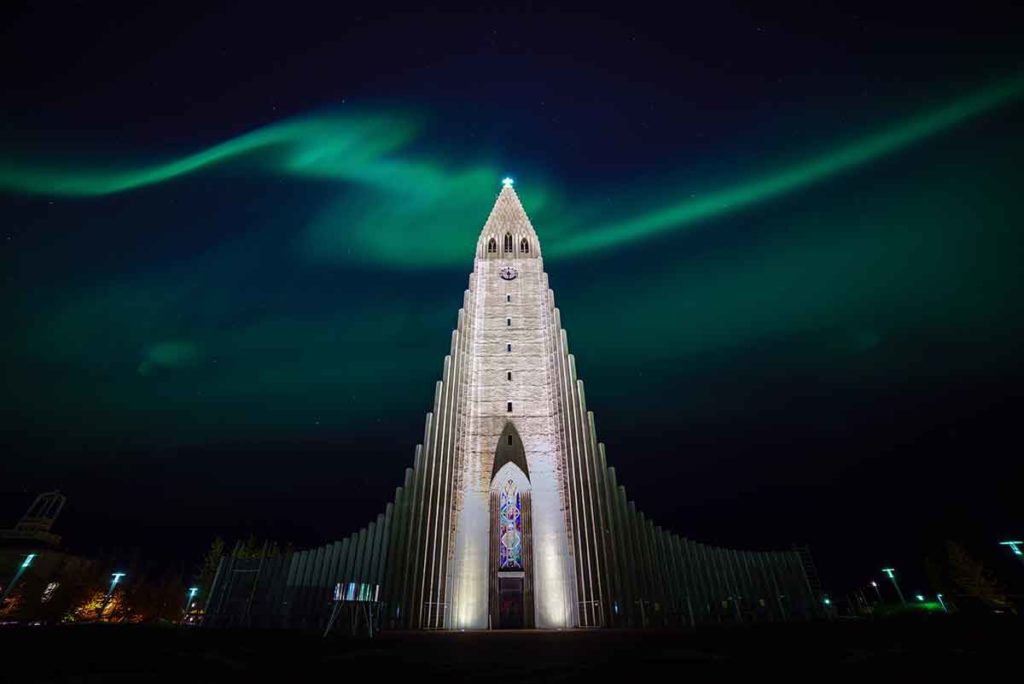
In Skagafjörður in the north of Iceland is Víðimýrarkirkja Church, possibly one of Iceland’s most beautiful churches.
The church, like the Viking houses preceding it, features a turf roof, black timber exterior, and a bright green door with red trim.
The church was built in 1834 and features bells cast in 1630.
It was written in an Icelandic saga that a powerful Chieftain named Snorri Sturluson built a fortress where the church stands today in 1220, adding to the allure and history of the area.
The turf topping the church is regularly replaced, however, the timber construction remains as it was in 1834.
20- Solheimasandur Plane Wreck
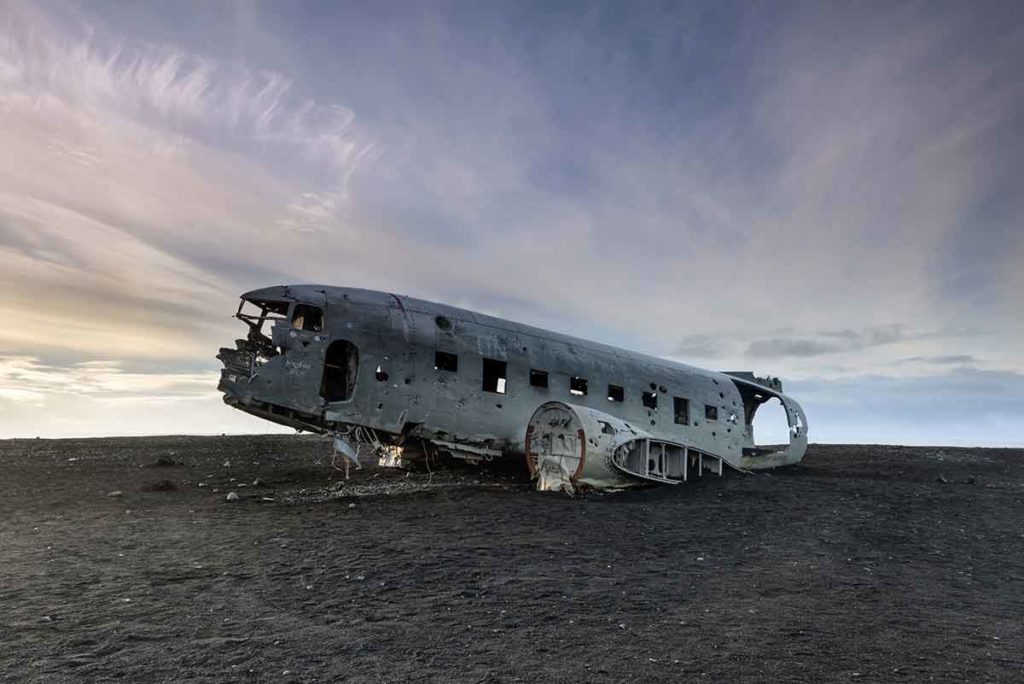
One of the most famous historical landmarks is the Solheimasandur Plane Wreck in south Iceland.
The plane, a Douglas R4D-8, was originally a US Navy plane which crash-landed in Iceland in 1973. It is still unclear as to why the plane crashed.
The plane wreck has suffered the brunt of the Icelandic weather and today the wings have fallen off, however, tourists still flock to see this unusual landmark in Iceland.
Due to its location, there is a strong chance that floods or even a volcanic eruption could displace or destroy the wreckage.
Discover more Famous World Landmarks:
- 25 Australian Landmarks
- 20 New Zealand Landmarks
- 20 African Landmarks
- 21 Egyptian Landmarks
- 20 Jordan Landmarks
- 10 Tasmanian Landmarks
- 20 Antarctica Landmarks
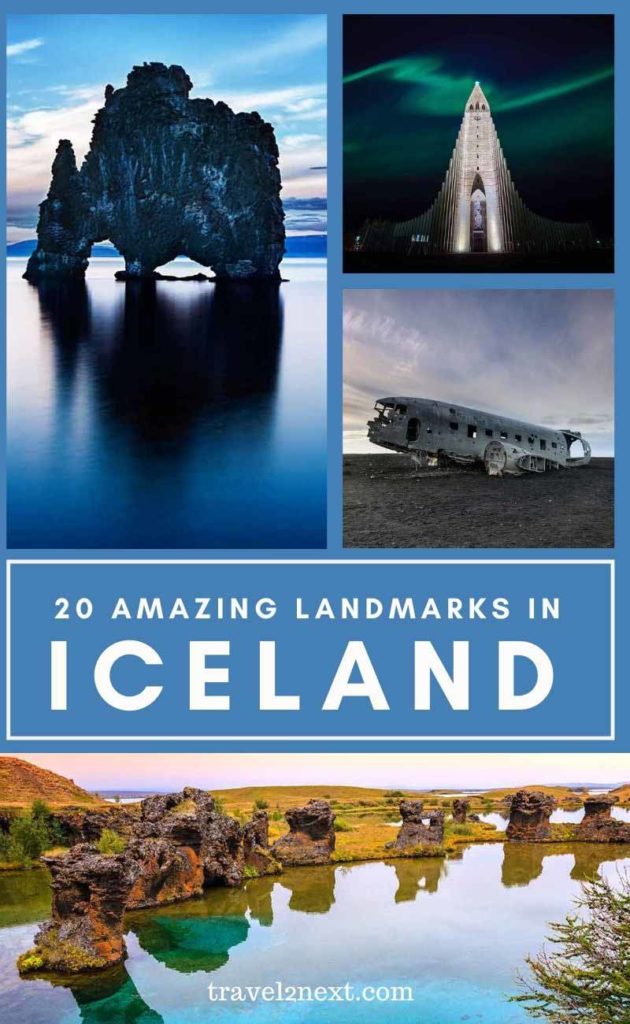
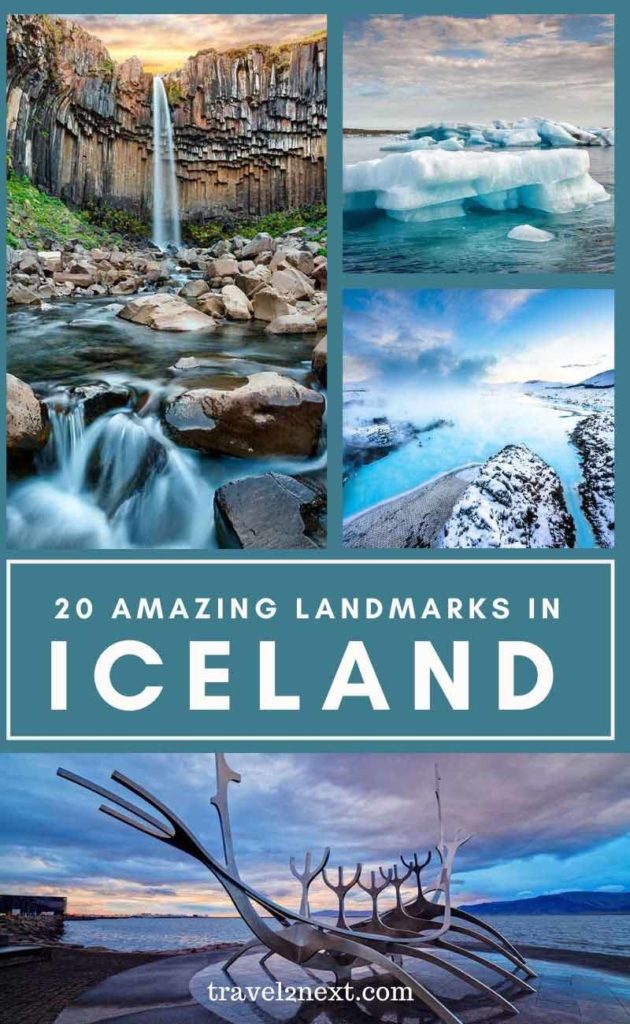
Plan Your Trip

Rent A Car – Find the best car rental rates at Discover Cars. They compare car hire companies to provide you with the best deal right now.

Find A Hotel – If you’re curious about this article and are looking for somewhere to stay, take a look at these amazing hotels.

